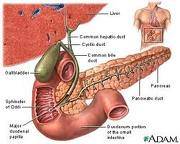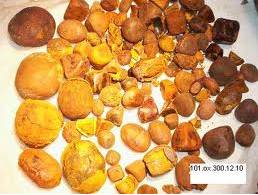Gallstones are very common in Western communities, affecting more than 25% of adults, predominantly women. Most are asymptomatic. Surgical removal of the gallbladder (cholecystectomy) is one of the most common surgical procedures performed.
What does the gallbladder do and what are gallstones?
The gallbladder is a pear-shaped organ that lies beneath the liver in the upper right side of our abdomen. It is connected to the liver and small intestine by small tubes called bile ducts.
Among many functions, the liver produces bile which is essential in digesting the fatty foods which we eat. Bile formed by the liver is stored in the gallbladder. During meals, the gallbladder contracts and expels the bile into the small intestine.
Gallstones form when components of bile crystallise to form stones. Gallstones vary greatly in size, number and colour. They commonly are 1-2 cm in diameter, but may be much larger.

What are the risk factors for developing gallstones?
The exact cause of gallstones is not completely understood, but certain risk factors are known to contribute. The most important risks include
- Increased weight (link to obesity surgery)
- Being female
- Being pregnant or having had children
- Family history of gallstones
- Older people

Unfortunately, gallstones can occur in all groups, at all ages with all or none of the above common risk factors.
What are the signs and symptoms of gallstones?
Gallstones can cause a wide and varied amount of symptoms. Classically the cause
- Intermittent, severe right upper abdominal pain
- Nausea and vomiting
- Commonly occur after eating a fatty meal
In addition to this, gallstones can cause much more serious problems when stones block the gallbladder or bile ducts.
When they block the gallbladder, they cause infection within the gallbladder (acute cholecystitis) or within the bile ducts (acute cholangitis).
Occasionally, gallstones can block the bile duct near the entrance of the pancreas which leads to infection of this organ. This leads to a condition known as acute pancreatis, which can be very serious.
How are gallstones diagnosed?
Ultrasound examination of the abdomen is the best and easiest way to diagnose gallstones. Ultrasounds can give us much more important information about gallstones such as whether they have caused previous infections, if the bile ducts look normal and if the gallstones have affected the liver.
How are gallstones treated?
The best treatment for gallstones that are causing symptoms is surgical removal of the gallbladder and gallstones. Although the gallbladder is an important organ, it is not essential to normal gastrointestinal function.
Other forms of gallstone treatment such as dissolving gallstones with medication or breaking stones up with shock waves is not recommended practice in Australia. This is because breaking larger stones into smaller stones can make symptoms worse. Additionally, unless the gallbladder is removed, stones are likely to reform.
Click here to learn more about surgical removal of gall bladder
To schedule a surgical consultation with Dr Braun, please contact us or call direct 07 33539694
